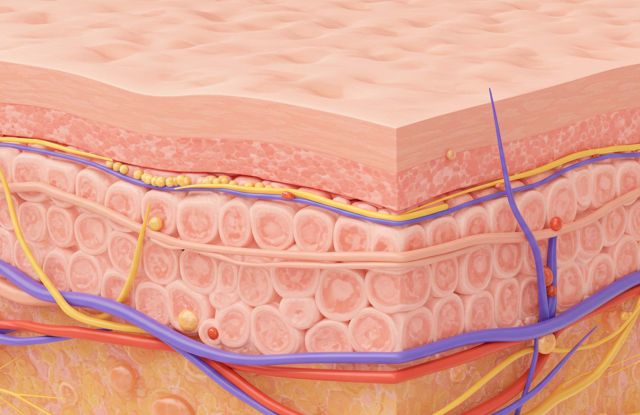
The Science of Tissue Elasticity: How Labia Stretching Works


The Science of Tissue Elasticity: How Labia Stretching Works
There is a quiet, fascinating complexity in the human body that often goes unnoticed, tucked beneath layers of curiosity, cultural expectation, and personal exploration. One such area is the labia—delicate tissues that respond in subtle, remarkable ways to movement, touch, and intentional care. Understanding how labia stretching works is not just about anatomy; it’s a journey into the mechanics of tissue elasticity and the physiology behind it, approached gently, safely, and with mindfulness.
Understanding Tissue Elasticity
At its core, the principle behind labia stretching is the same as with any soft tissue in the body: elasticity. Tissues are made of collagen and elastin fibers, which give them flexibility and resilience. When a controlled, consistent force is applied over time, these fibers can reorganize, lengthen, or adapt without tearing, much like gently stretching a soft rubber band.
For women, the labia minora and labia majora are particularly responsive due to their rich vascular supply and high concentration of connective tissue. Men may also notice similar principles in tissues like the foreskin, though the structure and mechanics differ. Elasticity is not about “force” or intensity; it’s about patience, regularity, and attention to the body’s feedback.
The Physiology of Stretching
When tissues are gently stretched, the body responds in two complementary ways:
-
Mechanical Response: The immediate effect is a temporary elongation of the tissue fibers. This is often felt as mild tension or resistance, but not pain. With repeated, careful practice, microtears can form in the collagen structure, which the body repairs naturally. The repair process allows fibers to lengthen gradually, contributing to a lasting change in tissue length and flexibility.
-
Cellular Adaptation: Over time, fibroblasts—the cells responsible for producing collagen and elastin—respond to stretching by reinforcing and remodeling the tissue. This adaptation is slow but cumulative. The body senses the stress as a signal to strengthen and accommodate, making the tissue more pliable and resilient.
This dual response explains why consistent, gentle practice can gradually increase tissue flexibility while maintaining health and integrity.
Labia Tissue Response Stages
| Stage | Description | Time Frame |
|---|---|---|
| Immediate Stretch | Temporary elongation of tissue fibers | Seconds to minutes |
| Adaptation | Collagen and elastin remodeling | Weeks to months |
| Long-Term Change | Increased flexibility and resilience | Months to years |
Practical Considerations
Understanding the science behind labia stretching is empowering because it frames the practice in realistic terms. It is not an overnight transformation but a gradual, intentional process. Safety is essential: avoiding excessive force, monitoring the tissue for discomfort or irritation, and allowing rest days are all part of responsible practice. Lubrication, warm baths, or gentle massage can support the tissue’s response, reducing friction and increasing comfort.
It is also important to note that labia size, shape, and elasticity vary widely. Some women may notice rapid changes; for others, adaptations may take longer. There is no universal “standard” or endpoint—only the progress that each individual’s physiology allows. Men, too, experience tissue adaptability in different ways, reinforcing that these principles of elasticity are universal but expressed differently across sexes.
Cultural Context
Cultural Insight
In some traditional African and Asian practices, labia stretching was part of women’s wellness rituals. It was often connected to bodily awareness, childbirth preparation, and sensual care rather than cosmetic alteration.
Historically, labia and genital appearance have been surrounded by cultural narratives, aesthetic ideals, and myths about normalcy. These beliefs have influenced how women perceive their bodies and approach practices like stretching. Acknowledging the cultural lens can provide insight without judgment: understanding why some practices developed and how they intersect with wellness helps create a more informed, intentional approach.
In many cultures, practices resembling labia stretching have been observed for centuries, not as performance or cosmetic alteration but as part of wellness, bodily awareness, and preparation for childbirth or intimacy. Scientific understanding now complements these traditional observations, providing a bridge between cultural knowledge and modern physiology.
Mindful Practice and Connection
Labia stretching is as much a practice of awareness as it is of mechanics. Gentle attention to sensation, breath, and relaxation enhances the tissue’s responsiveness and reduces tension. Viewing the body with curiosity rather than judgment encourages a healthier relationship with one’s anatomy.
By approaching labia stretching through the lens of science, physiology, and gentle care, it becomes possible to appreciate the intricate adaptability of human tissue. It is not about achieving a particular aesthetic ideal but about understanding the body’s capacity to respond, adjust, and thrive.
Frequently Asked Questions
Q: Is labia stretching safe?
A: Yes, when done gently and consistently, avoiding excessive force. Allow rest days and monitor for irritation.
Q: How long does it take to see results?
A: Tissue adaptation is gradual. Some women notice changes in weeks, while for others it may take months.
Q: Does labia size or shape affect stretching?
A: Individual anatomy varies. There is no standard; progress depends on tissue elasticity and regular practice.







